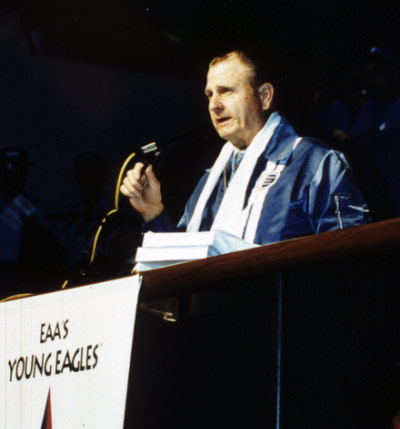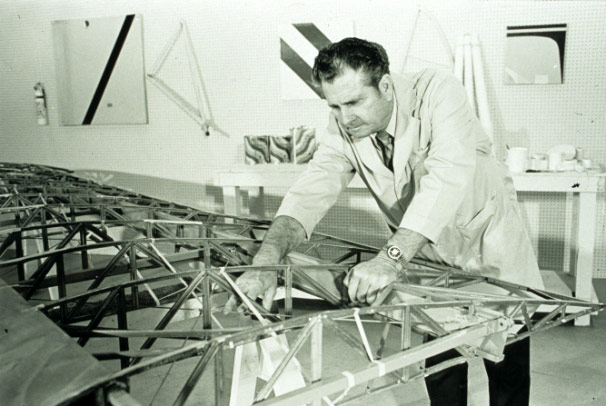EAA Mourns Loss of Homebuilding Pioneer Ray Stits
June 9, 2015 - Ray Stits, EAA Lifetime 136, aircraft designer and developer/founder of Poly-Fiber coverings, died June 8 of natural causes just under two weeks shy of his 94th birthday. Founder of EAA Chapter 1 in Riverside, California, Ray contributed greatly to aviation and supported the early days of experimental aircraft development. He is survived by his wife, Edith, son Don, two grandchildren, and four great-grandchildren.
Ray Stits was in many ways the Ed Heath of the second generation of homebuilders. In the early 1950s, shortly after the formation of EAA, he began a mail order business to supply homebuilders with materials and parts, just as Heath did in the 1920s and early ’30s. Ray followed that successful endeavor with a series of simple-to-build designs of his own: the Playboy, Playmate, Flut-R-Bug, and Sky-Coupe, which he eventually developed into a certificated airplane. Along the way, he also developed his famous Poly-Fiber covering process, which became so successful that he had to drop his other business endeavors and concentrate on it exclusively.
When he sold the company to the Alexander Aeroplane Company, Stits Poly-Fiber was the most widely used covering process in the world. One of the earliest EAA members, Ray Stits was the first to recommend to the organization that local chapters be authorized, and he founded the first one himself. He was an active member and could see EAA Chapter 1’s clubhouse on the Flabob Airport from his mountaintop home.
Ray and Edith were generous supporters of EAA from the very beginning. He earned the August Raspet Memorial Award in 1962 and was inducted into the EAA Homebuilders Hall of Fame in 1994.


